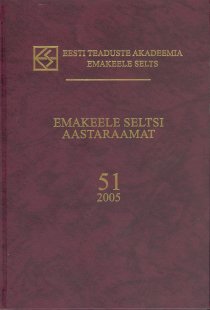peale ja pärast
Estonian peale ‘on, onto’ and pärast ‘after’
Author(s): Ann VeismannSubject(s): Language and Literature Studies
Published by: Eesti Teaduste Akadeemia Kirjastus
Keywords: cognitive semantics; polysemy; adpositions in Estonian
Summary/Abstract: This article presents an analysis of the various meanings of the Estonian adposition and adverb peale ‘on, onto’, one of the most polysemous grammatical words in Estonian. The article shows how the various meanings of peale form a motivated semantic network. When describing the meanings of peale, the authors refers to the notion of image schema (Johnson 1987). The meaning of peale can best be analysed in terms of an image schema which opens up three aspects – PATH, VERTICALITY, and COVERING. The paper also examines why peale has developed a meaning synonymous with the adposition pärast ‘after’ (although it is not acceptable in standard written language, it is very common in speech). The findings suggest that the VERTICALITY aspect provides an explanation for this kind of uses in the temporal domain.
Journal: Emakeele Seltsi aastaraamat
- Issue Year: 2005
- Issue No: 51
- Page Range: 170-183
- Page Count: 13
- Language: Estonian

